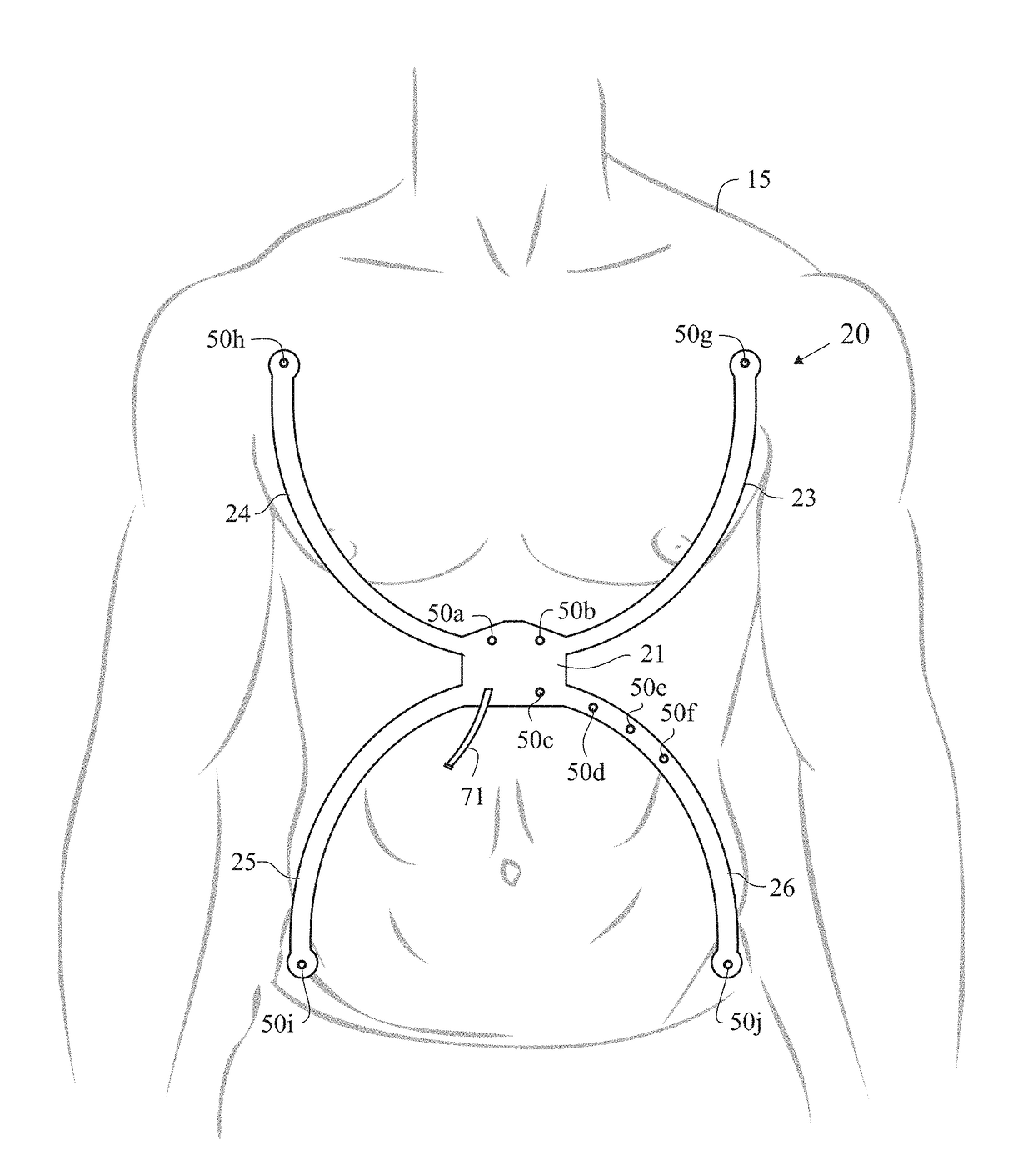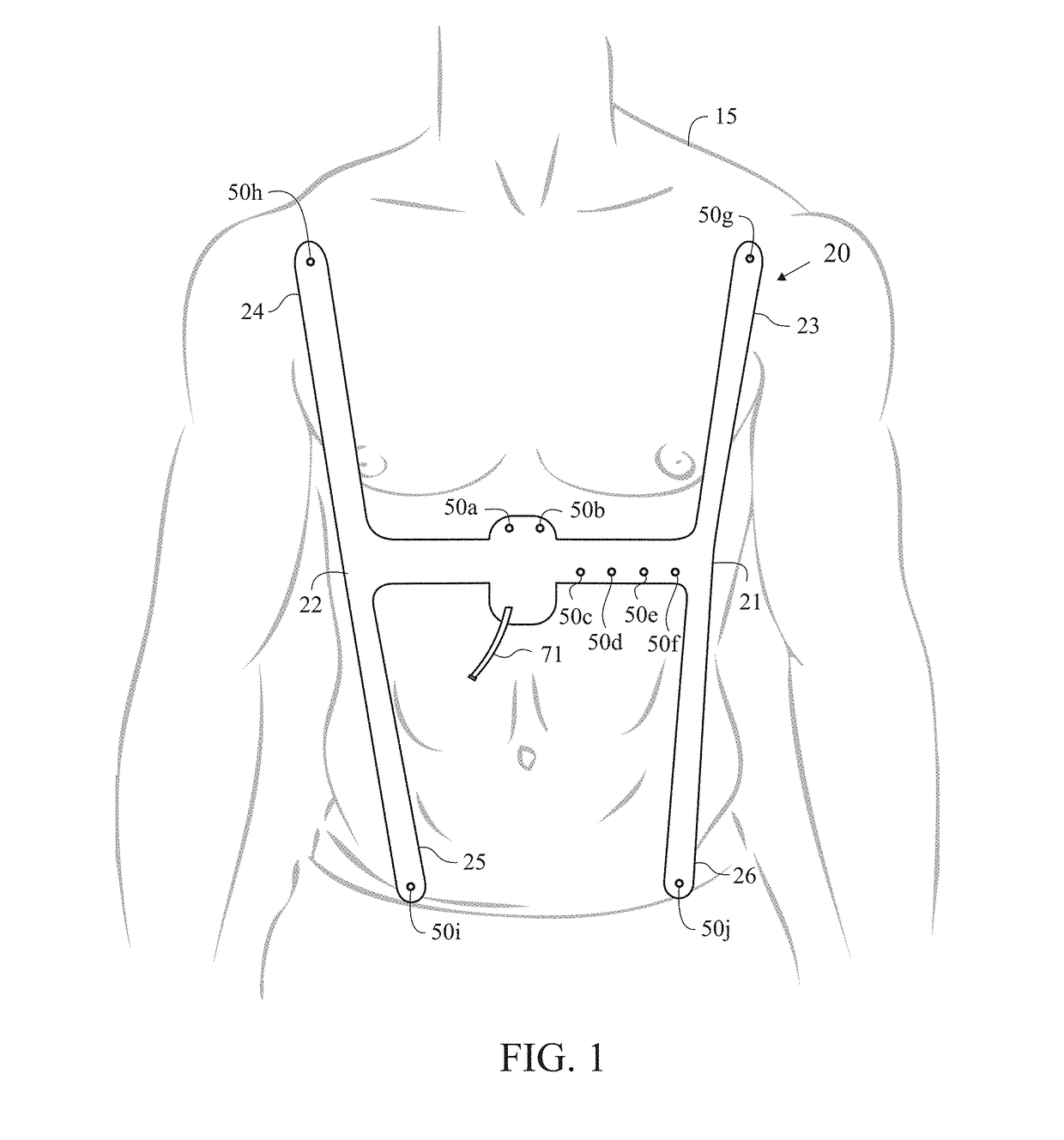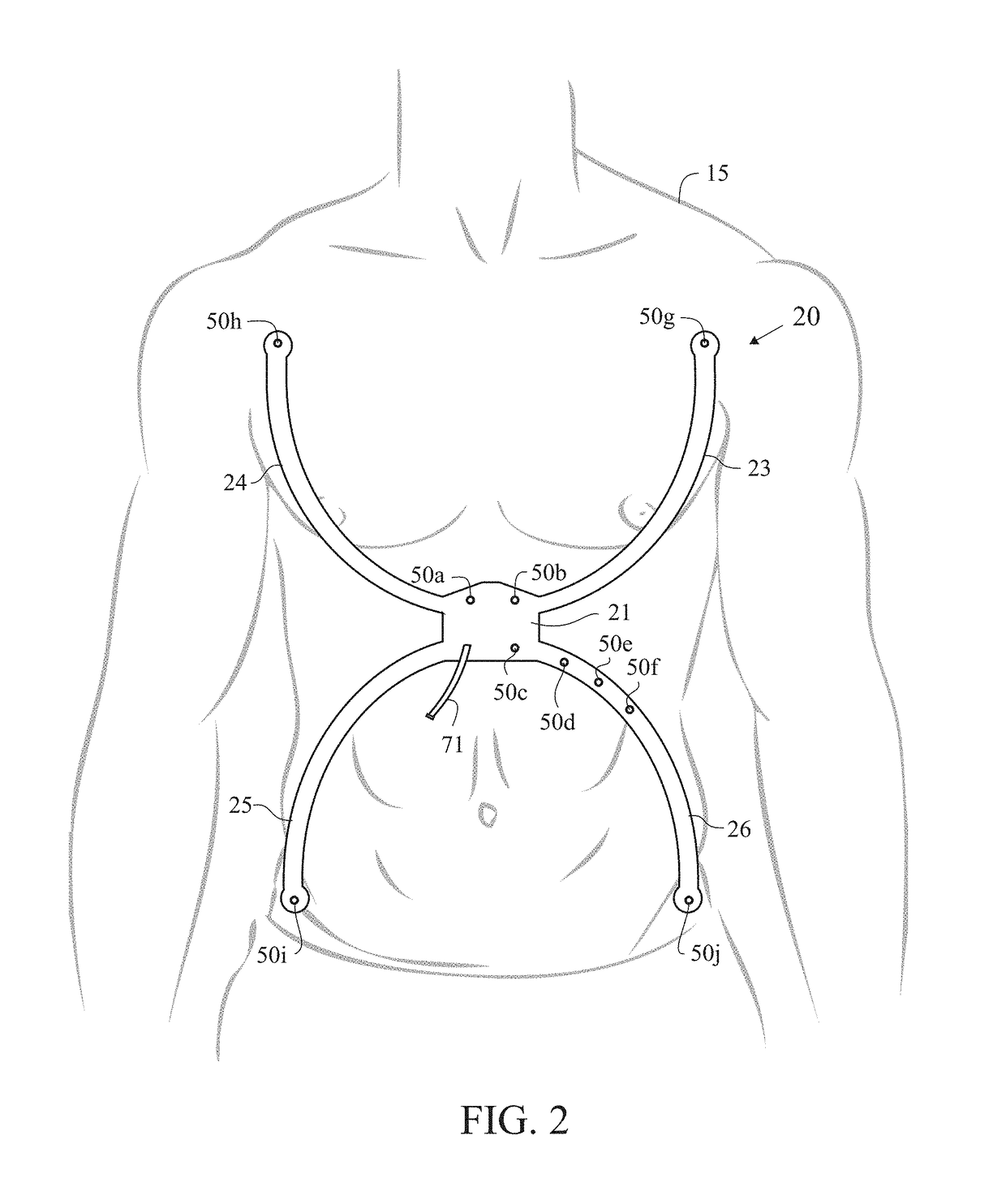Emergency Cardiac And Electrocardiogram Electrode Placement System
a technology of electrode placement and electrocardiogram, which is applied in the field of emergency cardiac and electrocardiogram electrode placement system, can solve the problems of limiting potentially interfere with diagnostic imaging, and inability to apply, so as to limit the opportunity loss of delay in diagnosis and treatment.
- Summary
- Abstract
- Description
- Claims
- Application Information
AI Technical Summary
Benefits of technology
Problems solved by technology
Method used
Image
Examples
Embodiment Construction
[0040]As shown in FIGS. 1 and 2, the emergency cardiac and electrocardiogram (ECG) electrode placement device (“EXG device”) 20 is a worn device that incorporates electrical conducting materials and elastic material into a pad that is applied to the chest wall placing the electrodes in the appropriate anatomic locations on a patient 15. A technician, such as an emergency responder, places the EXG device 20 on the patient 15 and connects the EXG device 20 to an ECG machine which generates an ECG.
[0041]As shown in FIGS. 1 and 2, the EXG device 20 preferably comprises a body 21, electrodes 50, printed wires or an electrical conducting flexible material 60 (not shown), and an electrode cable connector 71. The body 21 preferably comprises a center extension member 22, a first extension member 23, a second extension member 24, a third extension member 25 and a fourth extension member 26. The electrode cable connector 71 is positioned on the body 21. Each extension member 22-26 preferably ...
PUM
 Login to View More
Login to View More Abstract
Description
Claims
Application Information
 Login to View More
Login to View More - R&D
- Intellectual Property
- Life Sciences
- Materials
- Tech Scout
- Unparalleled Data Quality
- Higher Quality Content
- 60% Fewer Hallucinations
Browse by: Latest US Patents, China's latest patents, Technical Efficacy Thesaurus, Application Domain, Technology Topic, Popular Technical Reports.
© 2025 PatSnap. All rights reserved.Legal|Privacy policy|Modern Slavery Act Transparency Statement|Sitemap|About US| Contact US: help@patsnap.com



